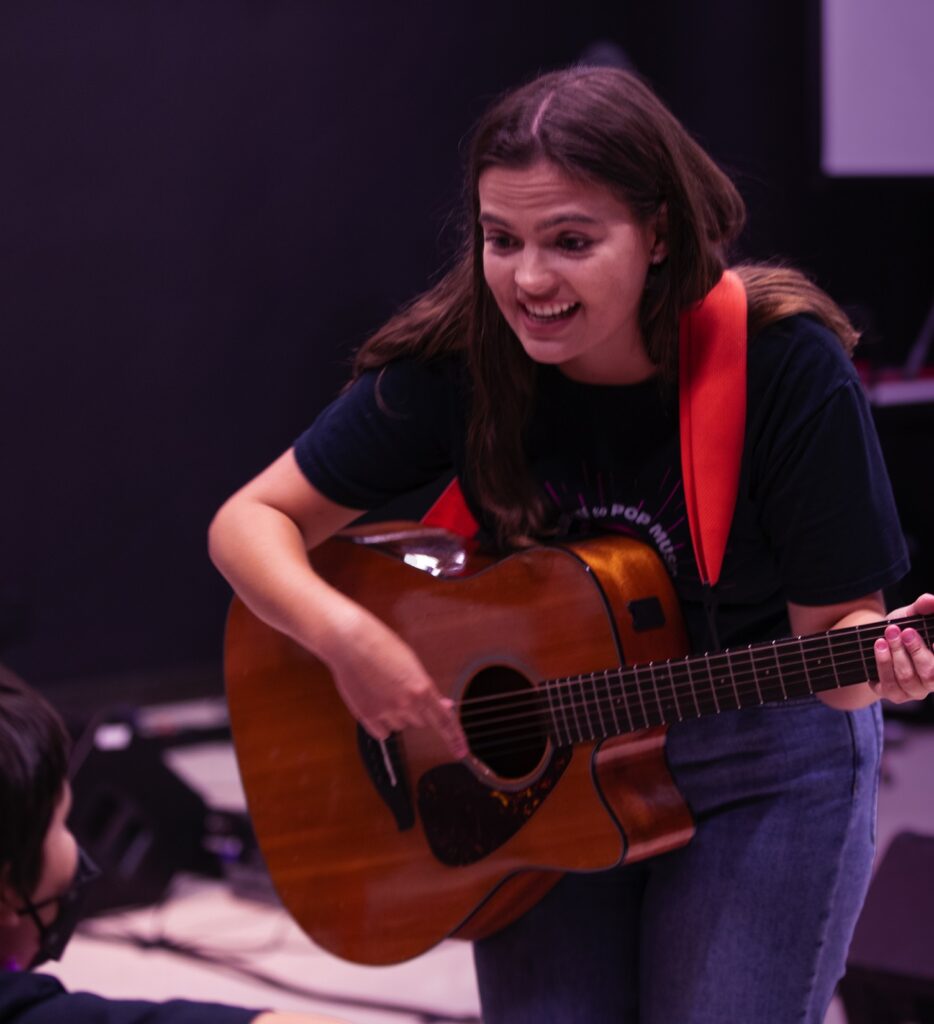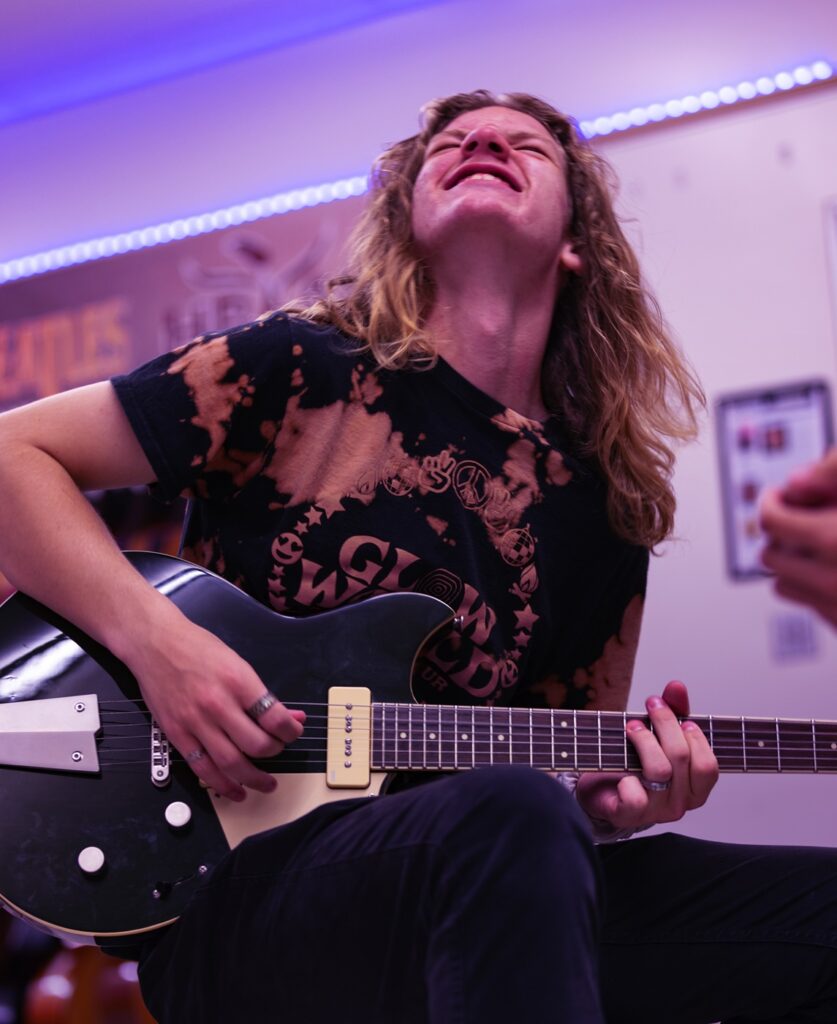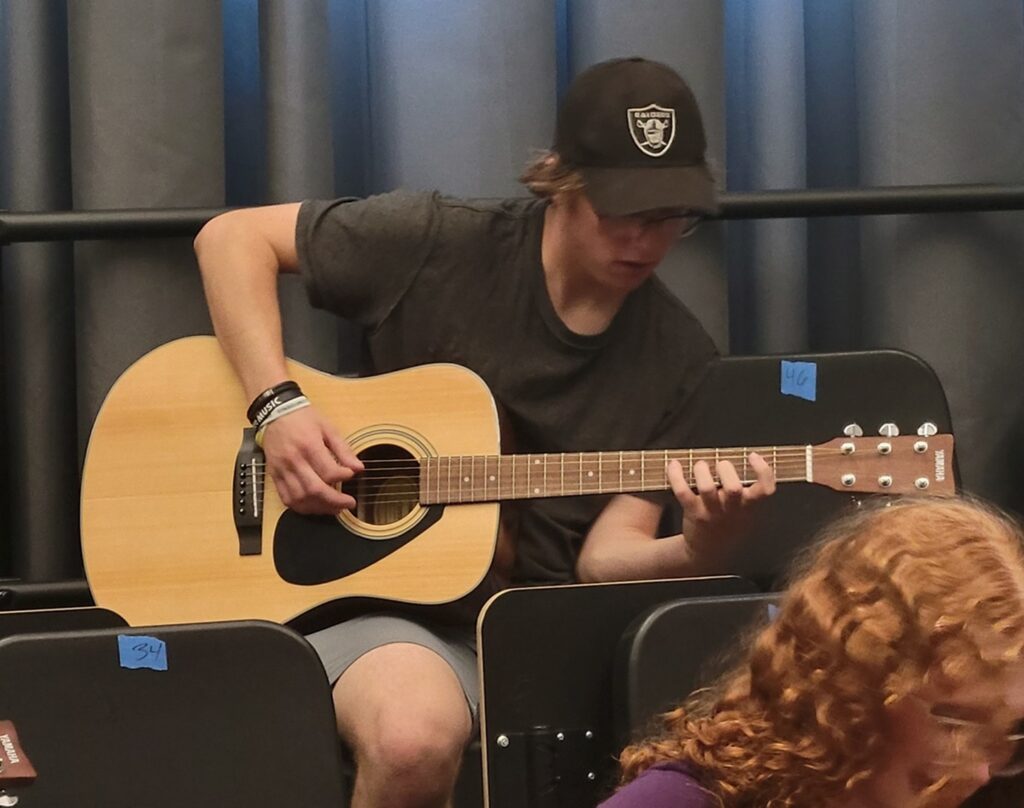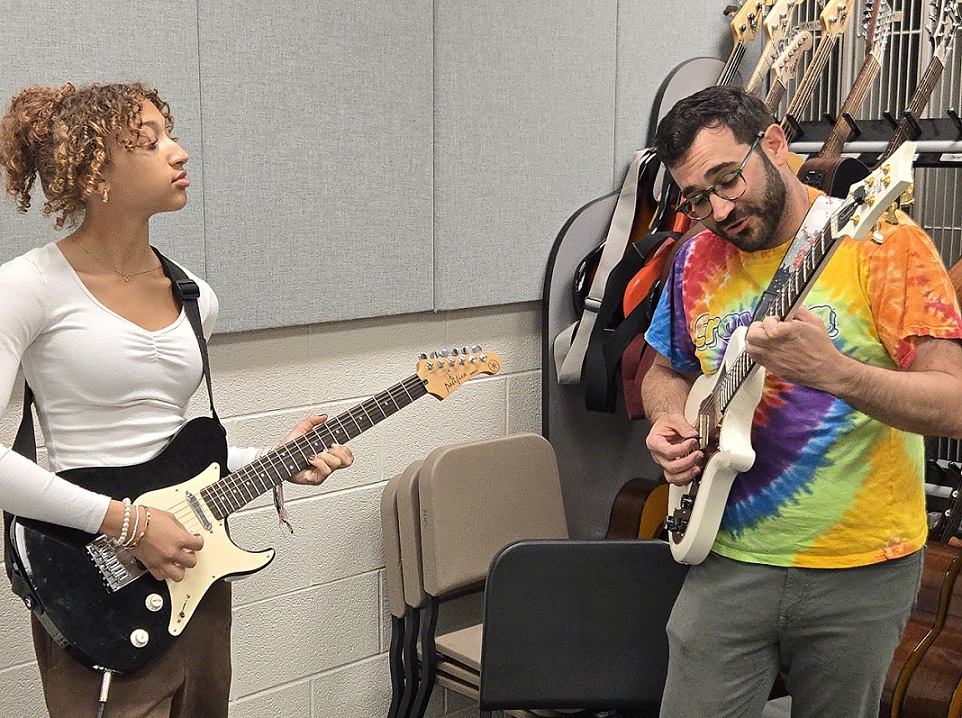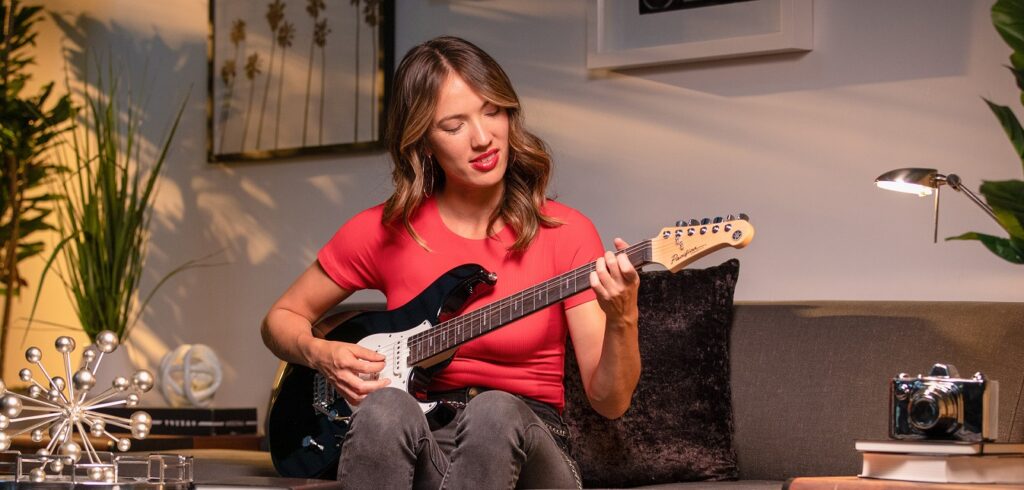Why Guitar?
Five reasons why teaching guitar is rewarding and worth adding to your class offerings.
I am a high school orchestra teacher in Reno, Nevada. I am a product of public-school music education, and I attended a state school where I barely passed my last semester of music theory. I’m not an expert in this field — I know, I’m really selling myself here.
One thing that I do well is setting goals for myself and reaching those goals with the support of trusted colleagues and subject matter experts who provide necessary mentorship and guidance. Along the way, I have failed and learned a lot.
I’m sharing what I have learned about starting a guitar program in the hopes that your journey will be less bumpy than mine. After all, we all want to connect as many students with music as possible. I certainly do not possess all the answers on this topic. When my knowledge base runs shallow, I find people who can help me and other music educators continue to move forward together.
Below I highlight five reasons why guitar is popular and why you should consider adding it to your class offerings.

1. Guitar is Fun
Many adults wish they could play the piano or guitar, and these same people want to see their kids take advantage of musical opportunities that they may not have had. By playing the guitar, students have the opportunity to choose not only the instrument, but the style of music they like best, and to connect with a new or different group of classmates. The ability to choose is extremely powerful for a student, and guitar teachers get to play a role in it. One day, students in our guitar class will grow into adults who can pass along how to play guitar to their own children. Being a part of this cycle is humbling.
Teaching beginners in guitar is also fun. The school year begins with students who have varying degrees of prior musical knowledge. Some know how to read music and play another instrument, some know how to play a few chords and make it through a song or two, and then there may be a high school junior who hasn’t participated in music since sixth grader choir and never played an instrument. In the span of 18 weeks, all these students will learn to read music, play melodies and chords, and put on a full performance where they are all musicians. There aren’t many places on our campuses where this sort of transformation occurs.
Seeing our students excel in guitar is fun, too! In college before my student teaching experience, I asked my viola professor what I should do if a student performed at a higher level than me. His response has stayed with me to this day: “As a teacher, isn’t that our goal?” Yes, it is. When one of my guitar students learns to play better than me, I am inspired!
Outside of our classroom, some guitar students will take to YouTube and learn techniques we cannot teach. These students choose what they learn, and guitar class was the accelerant. When a student sits down before class and I hear them play something that is technically demanding for their level, I am inspired. A student who discovers Led Zeppelin or Metallica in guitar for the first time allows for deep and meaningful connections.
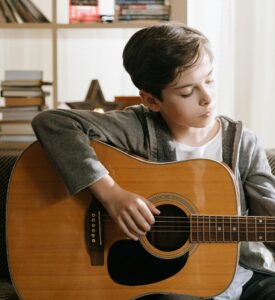
2. Guitar Kids Rule
The students in guitar class are not band, choir or orchestra students. This means that I am reaching different kids and connecting them to music. The vast majority of guitar students simply want to have fun for at least one class during their school day, and we are providing this opportunity with guitar. Their desire to play the instrument is infectious! They have a desire to continue to play while I’m trying to explain the next task. It drives me crazy, but it’s a special kind of crazy. As a teacher, how can I be upset when my guitar students wants to play guitar during guitar class?
Guitar kids have varied musical personalities. In a single class period, students easily switch between classical literature and technique to working on power chords, then tablature, then end by watching a video of Jimi Hendrix while leading a discussion of free speech as it relates to music. Because every student’s interests differ, the more varied the guitar curriculum, the more engaged they will be with little effort on the teacher’s part. Sharing music can be a way in which a student can safely expose vulnerabilities with their peers in a supportive environment. This creates a fast-paced classroom where a variety of topics are covered on a daily basis.

3. Guitar is Academic
Guitar is standards-based, curricular and assessable. Many schools have “easy” courses that students are placed into and they will get a passing grade. This is not the case with guitar. Guitar students must earn their grade by demonstrating skills and tasks that culminate in a musical product.
Guitar is an academic music subject treated thoughtfully and seriously by the National Association for Music Educators (NAfME). There are multiple publications that specifically cater to classroom guitar education. The first resource is the 2014 Guitar, Keyboard, and Harmonizing Instruments Standards that specifically addresses the guitar classroom. The standards are similar to the ensemble standards most of us are familiar with for band, choir and orchestra. Ensemble teachers can easily navigate the guitar standards and create meaningful experiences for students.
Additionally, the 2020 Opportunity to Learn (OTL) Standards provides guidelines for music educators and school administrators to establish a learning environment best suited for students in the classroom guitar environment. This takes the guesswork out of the usage of space, equipment needs and many other variables in the classroom. The NAfME Council for Guitar Education has provided Guitar Best Practices Year 1-4, a framework of assessable benchmarks for a four-year guitar program to help guide and assist guitar educators. When method books and other resources are partnered with NAfME standards and publications, a truly comprehensive academic guitar course can be offered.

4. Guitar Challenges Teachers
The word “challenge” often make teachers nervous because it’s usually associated with extensive planning, training, assessment creation and a whole host of other time-consuming tasks. For classroom guitar, the primary challenge is students’ varied musical interests. Some are motivated by rock, some by blues, some by classical, and others by everything ` 1else under the sun. These differences vary from year to year, which creates a fun opportunity for me to find relevant materials and music to keep the course fresh and interesting. As an educator, we can be authentically and culturally relevant as the culture of our students changes.
Another challenge guitar teachers face is pedagogical familiarity with the guitar. To combat this, I highly recommend professional-development opportunities like the Guitar and Accessories Marketing Association (GAMA) Teaching Guitar Workshops, which caters to teachers with varying comfort levels with the guitar, including no experience. These workshops also take into consideration all levels of classroom instruction from early elementary through community college. This ensures that all educators, regardless of experience and setting, will walk away with a sense of how to incorporate classroom guitar into their programs.
A third challenge for guitar teachers is the fear that students can actually learn from us. Prior to starting the guitar program at my school, I spoke with several other guitar teachers and they all said the same thing: You only need to be a couple of steps ahead of the students. This was golden advice in the initial stages of teaching guitar. It can be unsettling to begin a new guitar program or to start a job at a new school where you are teaching guitar for the first time in an already established program. As band, choir or orchestra teachers, we have most likely been involved in these ensembles since middle school. They are places of comfort for us. Branching out into guitar can be scary, and admitting the uncertainty is valuable. This challenge becomes less daunting and the fear calms itself as you gain experience.
A fourth challenge in teaching guitar is daily planning. If you possess good daily planning habits within a larger performance goal, your guitar class will be successful. We cannot plan for everything or anticipate every bump in the road. This is where honesty is key. Let students into your thought processes as a teacher and demonstrate what being a lifelong learner who works collaboratively with others looks like to solve unexpected problems. If a student is having difficulty with a certain skill or a question is asked that you don’t know the answer to, work in tandem with the class to find the answers. This demonstrates a level of care, humility and collaboration that students will benefit from.
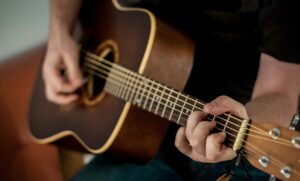
5. Guitar is Student-Centered
Many music departments are leery of starting a guitar program because they fear that enrollment in band, choir and orchestra might decline. This is partially due to a fear of declining enrollment and also a fear of the unknown. I began my instrumental music path as a violinist, which I enjoyed, until I found the viola and fell in love with the instrument. I started practicing more and improved faster because I found the instrument that I truly connected with. Kids choose instruments because they like them. You might have the occasional student who chooses guitar over trombone — and that’s to be celebrated. A child learning an instrument they want to learn is truly a student-centered focus.
Removing barriers to participation is another student-centered feature of teaching guitar. Guitar offers a musical experience in middle school and high school that does not require a prerequisite. We all know students who participated in music at an earlier age and want to become involved in music again, but they find ability differences on various instruments too difficult to overcome. Guitar allows students like this an opportunity to re-enter performance-based music. This opens up new connections to teachers and other peer groups outside of these students’ every day friend groups.
Guitar will open doors that you and your students did not know existed. The guitar program at my school started with one class of 26 students taught by me. It has since expanded to two years of instruction and adding a second music teacher who teaches a second section of beginning guitar. There’s also the frenzy of trying to offer more guitar instruction, and the reward of watching students step into our jazz orchestra and jazz band as guitar players who can branch out into other areas in our music department. Music educators respond to what our students need. It’s not every day that a student says, “I want to do that thing that’s kind of difficult at an even more difficult level.”
Guitar does that. How lucky are we?










